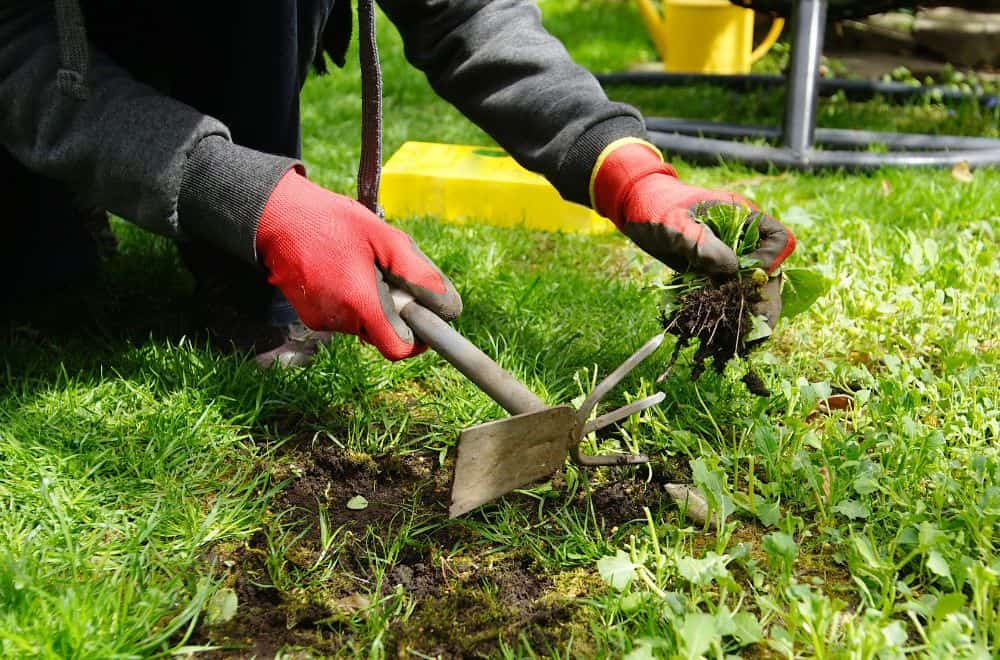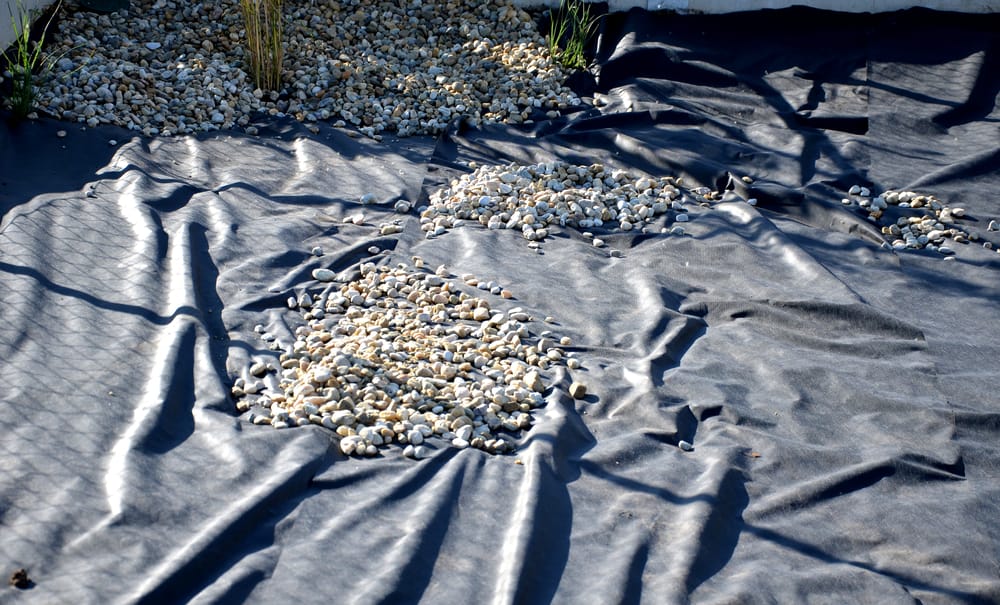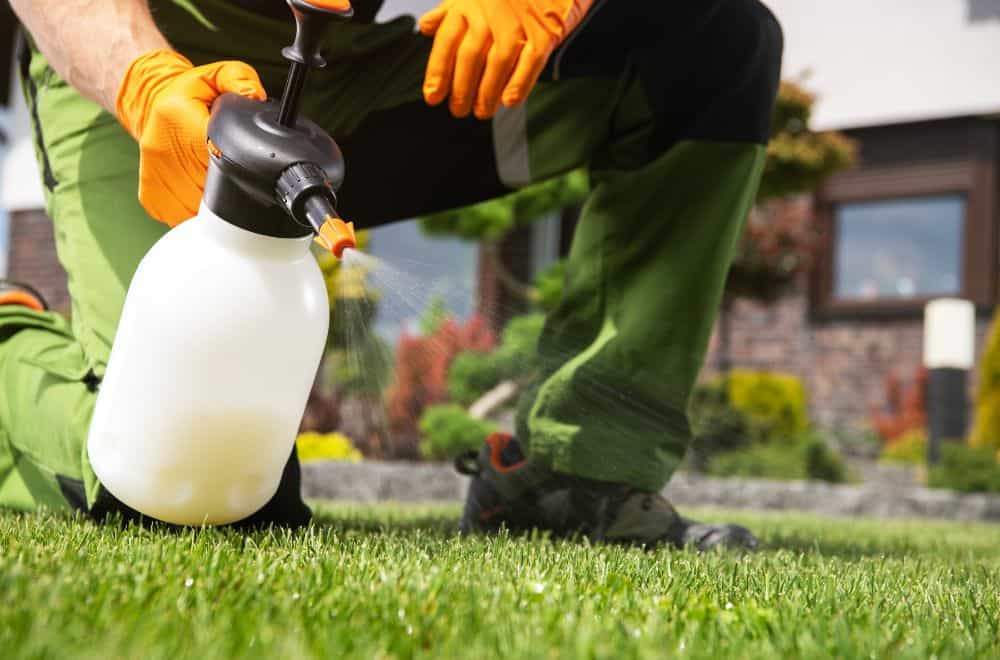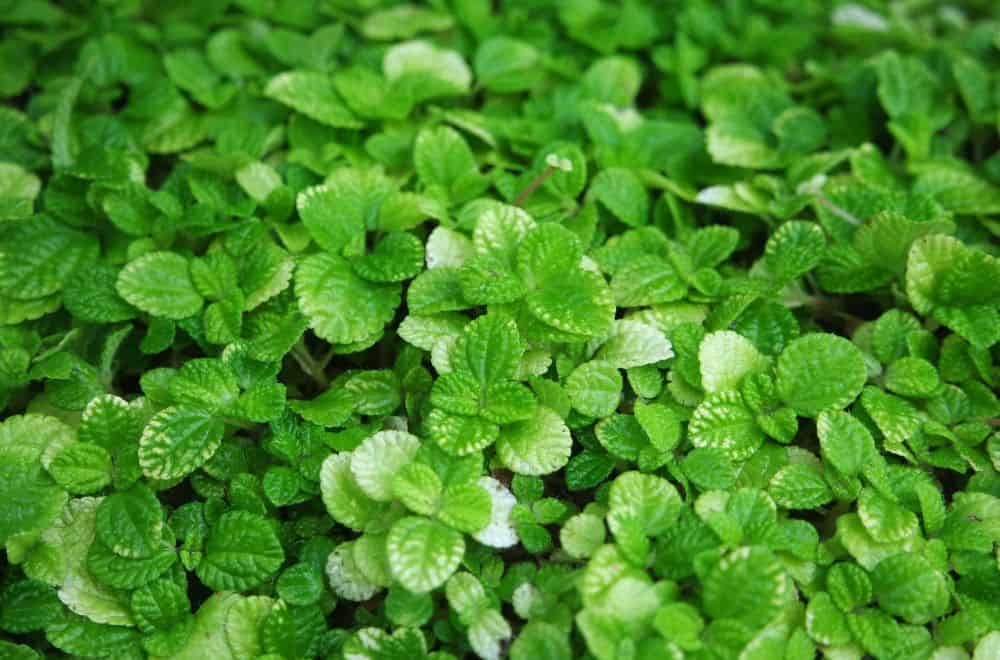If you’re the proud owner of a beautifully sculpted and cared-for lawn, you are probably familiar with the threat of creeping Charlie, the invasive and tenacious scourge of gardens everywhere.
Once it takes hold, it can be a real battle to keep creeping Charlie at bay, but with the right knowledge and careful application of the correct techniques, this is a fight you can win – so here’s everything you need to know about getting rid of creeping Charlie in lawn.
What is creeping Charlie?

Creeping Charlie is a plant from the same family as mint that arrived in North America from Europe in the 19th century.
It was originally brought over for use as an ornamental plant and is also known to have medicinal properties, but it has since established itself as an invasive weed, and once it takes root, it is notoriously hard to eradicate.
This weed goes by several names. Its Latin name is Glechoma hederacea, but it is also known as ‘ground ivy’ (due to its resemblance to true ivy) as well as ‘cat’s foot’ and others.
Although not the ugliest of weeds, its presence is rarely desirable due to its tendency to spread unchecked throughout a garden, smothering other plants and killing prized lawns and other plants.
It does best in moist, shaded areas, and one of the reasons it is so difficult to dislodge is that the nodes where the leaves grow can send out roots when they touch the ground. This means even a tiny piece can start a new plant if it remains in the soil.
How can you identify the weed?
The first step in fighting this unwelcome invader is identifying your adversary. Creeping Charlie is simple to spot, but it’s no good employing the methods we talk about below if you’re actually dealing with another species.
As we mentioned, this weed is related to mint and looks quite similar. It sports round scallop-edged green leaves and spreads across the ground in vines, creating a thick layer of vegetation that prevents anything else from growing.
Flowers appear in early spring and are a pretty violet-blue in color.
Sometimes creeping Charlie can be mistaken for creeping Jenny. However, while they may appear superficially similar, the scallop-edged leaves will tell you that you are dealing with Charlie – Jenny has rounded leaves, making it easy to tell the difference on close inspection.
Check out this video that gives you a good look at what this lawn intruder looks like.
Three methods to get rid of creeping Charlie weed
Once you are satisfied that you are dealing with creeping Charlie, there are three main techniques for getting rid of it: pulling it up by hand, smothering it to deprive it of light and treating it with herbicide.
If you are only dealing with a small infestation or you catch it early, you might be able to resolve the problem simply by pulling it up. However, for this to be successful, you need to make sure you get every last bit or it will just take root and come back again.
The second method, smothering it, is more effective, but this will kill any other plants that are growing around it. This means it could be a good option if you want to eradicate the weed and start again, but you may end up destroying areas of your lawn, leaving you needing to reseed.
Turning to herbicide is the most extreme option, but if you are dealing with a well-established growth in your lawn, it may be your only choice. However, if you have children or pets that may be sensitive to herbicide, this should be seen as a last resort.
Now let’s look in more detail at how to go about using these three techniques to kill off the creeping Charlie in your lawn.
Method 1: Pulling it up by hand

If you spot a growth of creeping Charlie early enough and act fast, you may be able to prevent it from spreading further by pulling it up manually.
However, this technique is likely to damage an area of your lawn, meaning you’ll need to be ready to repair the damage once the Charlie is defeated.
Here are the steps to follow.
Step 1. Trim the creeping Charlie
Begin by trimming the leaves and stems of the weed, leaving just enough to allow you to pull it up later. This will mean there is less to deal with when the time comes to start pulling it up.
Step 2. Soak the soil where the creeping Charlie is growing
Next, take a hosepipe and give the area where the weed is growing a deep soak. This is because it will be much easier to pull the roots out of the ground if it is wet. Once you have soaked the ground, leave it for around an hour.
Step 3. Loosen the soil with a pitchfork
After you have left the ground to soak for an hour, start by loosening the soil with a pitchfork. If you are doing this in your lawn, try not to damage the ground or disturb the grass too much – but you will have to accept the process is not going to leave your lawn in perfect condition.
The aim here is to expose the roots of the creeping Charlie so you can pull them up without breaking pieces off – if pieces remain in the soil, they will just regenerate, resulting in the creeping Charlie returning in the future.
Step 4. Remove the roots
Once you have loosened the soil, start working through the area, pulling up all the roots by hand.
You need to try your best to pull the Charlie up in one piece because if you leave any behind, it will take root and start growing again.
Step 5. Inspect the area
Your next job is to go through the soil using a trowel to check for any pieces that have broken off and remained in the ground. Try your hardest to find even the smallest bits to prevent the Charlie from coming back.
Step 6. Repeat as necessary
Unfortunately, you will be lucky if you can rid yourself of the creeping Charlie at the first attempt using this method since it is difficult to catch every small piece. This means you may have to repeat the process several times before the weed is eliminated entirely.
Pro tip: As you go through these steps, be careful to place all the pieces of creeping Charlie in a bag for proper disposal since any that is left on the floor can restart the infestation.
If you have a compost pile, don’t add the creeping Charlie to it – otherwise, you may find the Charlie takes root again there.
Pro tip: It’s best to wear gloves when pulling up creeping Charlie since it can be skin irritant – and some people may even be allergic to it.
Method 2: Smothering it

Smothering creeping Charlie can kill it dead by depriving it of the sunlight it needs to survive. Here are the steps to follow to try this technique.
Step 1. Choose something to cover the creeping Charlie with
The first step in this method is to choose something to place over the creeping Charlie, and you have several options.
To cover the creeping Charlie, you can use cardboard, newspaper, tarp or even a thick layer of mulch.
Step 2. Cover the creeping Charlie completely
Once you have decided what you are going to use, cover the area where the weed is growing completely. It is best to extend the cover at least about foot around the area where the creeping Charlie is visible to prevent it from growing out of the sides.
Step 3. Leave it covered for a week
It will take at least a week for the creeping Charlie to die, so leave it covered for at least that long.
Step 4. Check if it’s dead
After a week or so, have a look under the covering to see if the plant is dead. It will be brown and shriveled if the operation has been a success. If you see traces of yellow or green, cover it over and leave it for a few more days.
Step 5. Pull it up like in Method 1
When you are satisfied that the creeping Charlie is completely dead, uncover it and pull it up like in Method 1. It should be easier to do now it’s dead, but still be careful not to leave any pieces in the soil or there will still be a risk of it returning.
Pro tip: This method is suitable for use on lawn if you don’t want to turn to chemicals. However, it will also kill areas of your grass, so you need to be ready to reseed when the creeping Charlie has been removed.
Method 3: Using herbicide

This is perhaps the most extreme method, but you may choose to turn to chemicals if the growth is particularly bad or you want to avoid damaging your lawn in the process of killing and removing the weed. Here’s how to do it.
Step 1. Buy the correct herbicide
One of the most important steps in treating creeping Charlie with herbicide is making sure you buy the right type. Although creeping Charlie is a broadleaf weed, not every type of broadleaf herbicide will be effective.
The best herbicides to use are ones that contain a combination of dicamba and triclopyr, and using one of these will kill the weed without damaging your lawn. Also, make sure you buy a herbicide that is suitable for your grass type.
Step 2. Read the instructions and prepare the herbicide
Since all herbicides are different, you should read the instructions carefully.
Once you know how the product you are using should be used – and making sure you wear gloves and safety goggles before you start – you can prepare the herbicide according to the directions.
Step 3. Spray the area and leave the herbicide to do its work
When you are ready, spray the herbicide onto the affected area and leave it to do its work. It should kill all the creeping Charlie, leaving you to rake up the dead weed afterwards.
Pro tip: The best time of year to apply herbicide to creeping Charlie is at the end of fall. This will weaken it, making it much harder for it to survive the coldest months. You can then clear the dead weed away the following spring.
Pro tip: Apply the herbicide three days after mowing your lawn. This will allow more of the chemical to be absorbed by the weed. Then leave the lawn at least three days before mowing again to allow the herbicide to be fully absorbed by the plant.
Pro tip: People used to believe that borax worked as an effective natural herbicide against creeping Charlie. However, this is not the case, so using it should be avoided.
Here’s a video you can watch showing a YouTuber doing battle with creeping Charlie using herbicide.
How to prevent creeping Charlie become established
Prevention is better than cure, and it is preferable to stop this weed becoming established in the first place. Also, if you manage to rid yourself of an infestation, it’s also important to do what you can to discourage it from returning.
Remember that creeping Charlie thrives in moist, shaded areas, so try to eliminate areas like this on your lawn.
As with any lawn-invading weeds, another key to keeping creeping Charlie at bay is ensuring your lawn always remains in a healthy condition.
Creeping Charlie can establish itself when lawns are unhealthy, but if the lawn is growing well with strong roots, this will stop the Charlie in its tracks.
To help it, this means you should always follow mowing, watering and fertilizing best practices.
Deal with creeping Charlie as quickly and efficiently as possible
The key to dealing with creeping Charlie is taking action as early as possible. This way, you can prevent it from becoming established, meaning you might be able to kill it using a less extreme method.
At the same time, pay attention to your lawn’s health to prevent it from taking root in the first place – and after successfully defeating the weed, make sure you take the necessary steps to prevent it from making a comeback.

Leave a comment